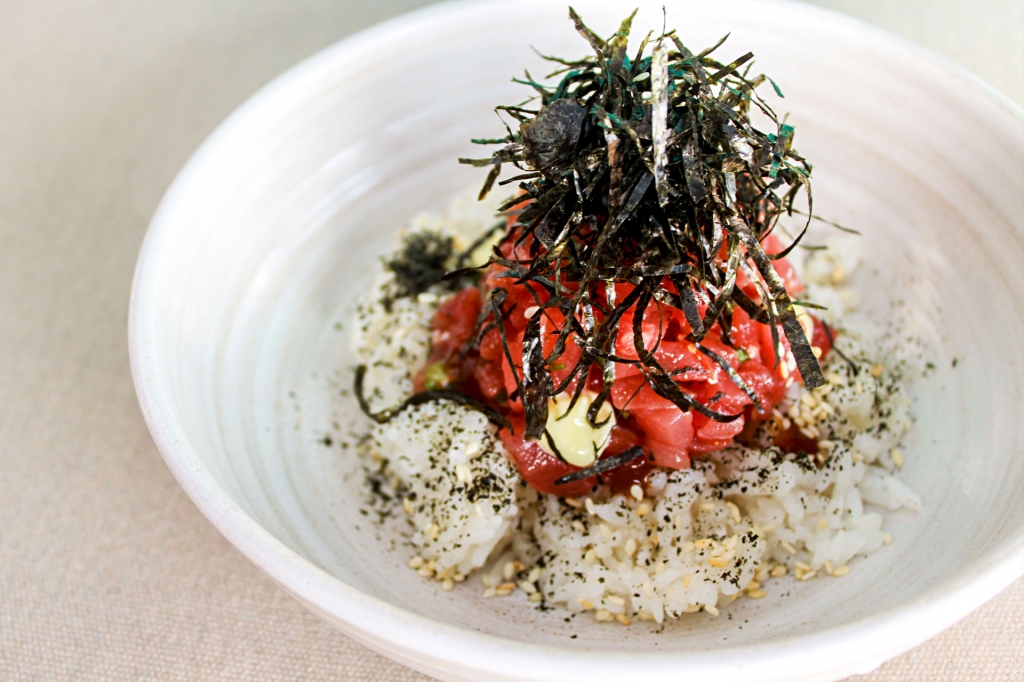
2 November 2017 - Few weeks ago, we launched a new lunch menu at Seasalt and Poke Bowl is among the list. Yes, you may have heard the dish name for its ubiquity. Given the two digits million search results on Google, Poke Bowl has attracted foodies to dig in the trend deeper – be it for a good munch session in summer (or daytime in Bali) or a D-I-Y kitchen project.
Origins and Phenomenon
It began with Hawaiian fishermen way of cutting their catch of raw fish into cubes and seasoning it with any ingredients available. Poke, pronounced as “poh-key” as in uttering the word “OK”, means “cut piece" or "small piece” in Hawaiian and served as a local fish dish in Hawaii. In line with its history, poke consists of chunks of raw fish – often deep ocean fish (in this case is tuna), seasoned with salt, limu (seaweed), and ground, roasted kukui nut or simply Inamona (a condiment made of kukui nut/candlenut and salt).
According to the food historian Rachel Laudan in her book “The Food of Paradise: Exploring Hawaii’s Culinary Heritage”, poke was popular during 1960s to 1970s as a thing to have with beer after work and to include among the “heavy pupus” (a Hawaiian tray full of meats and seafoods in large amount) for your party. Now, poke is very common in Hawaiian culture and is found everywhere – from supermarkets to gas stations and roadside stands.
Modern version of poke also saw a wide range of variations in ingredients. While the classics maintain inclusions of aku (skipjack tuna) and ahi (yellowfin tuna), nowadays it is common to see the addition of Japanese/Asian-influenced soy sauce, green onions, sesame oil and chili pepper. Current craze beyond the originating island gives traditional poke a slightly further modification, incorporating quinoa, zucchini noodles, and tomatoes, and even making the dish on its own for the fast-food restaurants in the USA as well as worldwide.
Bali’s Rice Fields and UNESCO-Recognised Subak Sustainable System
As in Seasalt, the term “poke bowl” refers to the poke ingredients tossed over a bowl of rice. If you hover around our Menu, five kinds of poke bowl are available to order: Tuna (avocado, kyuri, chirashi rice), Red Rice Miso (red miso, corn pickled, edamame), Gindara (higashimaru shoyu, spinach, sesame seeds), Pork (Spicy onion, yamasa shoyu, ginger), and Seafood (Mahi mahi, shrimp, okonomi dashi).
With rice being a staple ingredient for Seasalt’s Poke Bowl, we take you to the naturally-grown rice fields in Jatiluwih - Tabanan, a region known for its magnificent rice terrace, and from which we sourced our white and textured rice. Jatiluwih rice terrace is located in the heart of Bali, 700 meters above sea level and has been one of the most favorite sceneries for world travellers’ Instagram feeds.
The rice terrace comprises Subak, a water management system for rice fields in Bali originated from the 9th century. Subak reflects philosophical concept of Tri Hita Karana, which binds together the human world, the spirit, and nature – promoting the harmonious relationship between the environment and humans who actively engaged in ritual concepts and dependent to the life-sustaining forces of natural world. For this fact, the natural landscapes in Bali incorporating this system has been enlisted in UNESCO World Heritage Site since 2012.
Subak is considered as a sustainable system where Balinese agrarian society continuously work together with the villages’ community centers and temples. It is obviously seen through the water temple rituals, where water from springs and canals flow through the temples and out onto the rice paddy fields. Rice is seen as the gift from God and Subak is part of temple culture.
